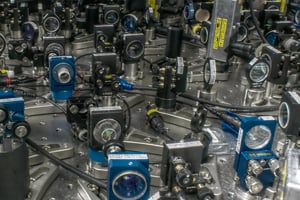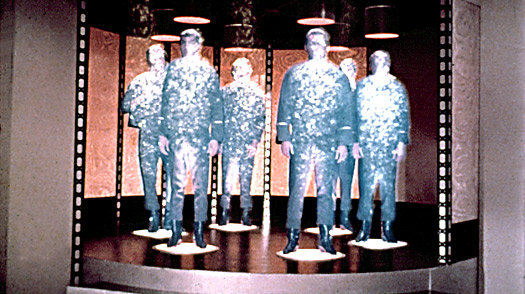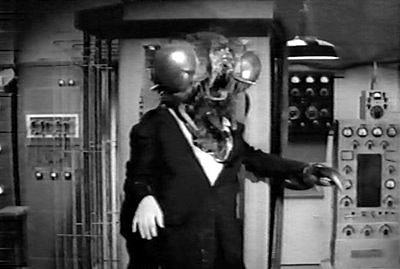Disclaimer before proceeding: I am not an expert in quantum mechanics. But since this is about teleportation, and that’s awesome, it was something I chose to cover today. And now, the news.
A team of Japanese and Australian researchers at the University of Tokyo have successfully accomplished the teleportation of quantum information, which means that wave packets (of light) were broken down and reassembled somewhere else. This opens up the possibilities for advancements in quantum computing. Human transportation … not so much. Sorry, Seth Brundle.
They say it will make possible high-speed, high-fidelity transmission of large volumes of information, such as quantum encryption keys, via communications networks.
So, let’s break this down: The theory that’s being applied to this achievement is Schrödinger’s Cat — a cat is placed in a box with radioactive material. A Geiger counter measuring the levels of radiation in the box will indicate whether or not an atom has decayed, which will trigger the release of cyanide gas that will kill the cat. However, there is no way to know if the cat is dead or alive without actually seeing it. So there are two realities — the cat is dead and the cat is alive. This is referred to as superposition. (Same idea as “If a tree falls in the woods and no one is around to hear it, did it really fall?”)
As it applies to quantum mechanics — and this teleportation experiment — a similar superposition was created with beams of light. Elanor Huntington, a professor in the School of Engineering and Information Technology at the University of New South Wales in Australia, explains:
“So in our case what we’ve done is take a macroscopic beam of light [visible to the naked eye] and put it into a quantum superposition, which is extremely fragile, and teleported that from one place to another.”
 Here is my attempt at discerning exactly what this means: This beam of light has been put into a quantum superposition for teleportation, which means its two states (dead cat/alive cat) are “unassembled” and “assembled.” (Considering how teleportation works — matter is unassembled then reassembled at another location. State #1 means that it was unassembled, State #2 means that it was not.) The medium containing this quantum superposition is referred to as a wave packet and is measured in binary code — 1 and 0. This wave packet is both 1 and 0.
Here is my attempt at discerning exactly what this means: This beam of light has been put into a quantum superposition for teleportation, which means its two states (dead cat/alive cat) are “unassembled” and “assembled.” (Considering how teleportation works — matter is unassembled then reassembled at another location. State #1 means that it was unassembled, State #2 means that it was not.) The medium containing this quantum superposition is referred to as a wave packet and is measured in binary code — 1 and 0. This wave packet is both 1 and 0.
“One of the ways that we encode digital information is by its phase,” Huntington says, “so what we’ve done is created a wave packet that’s simultaneously a one and a zero in its phase.”
“Superposition is exactly what underlies the power of things like quantum computers. You enable parallel processing because at the same time it’s a one and a zero. The point is, we’ve managed to teleport it from A to B without the one and the zero getting confused,” she said.
It doesn’t get confused because it has both options to work with. If it was unassembled and ready to teleport, that matter could be processed and teleported from point A to point B. If it had stayed assembled, it wouldn’t have worked. But since the wave packet contained both options, it contained the one that would work, and teleportation was successful.
If this was referring to teleportation in Star Trek, then there would have been two versions of every member of the Enterprise crew before teleportation: one version whose human matter was properly broken down and another version whose wasn’t. And this is why we can’t do this with humans yet — because we are way too organic to teleport. For now, we will have to stick with teleporting light and information.
So, yeah, we won’t have to worry about this happening for a while:
(CBC News via I Heart Chaos)









Published: Apr 17, 2011 12:53 pm